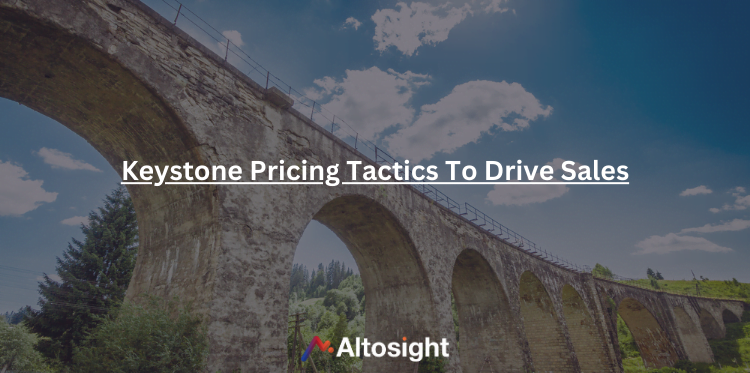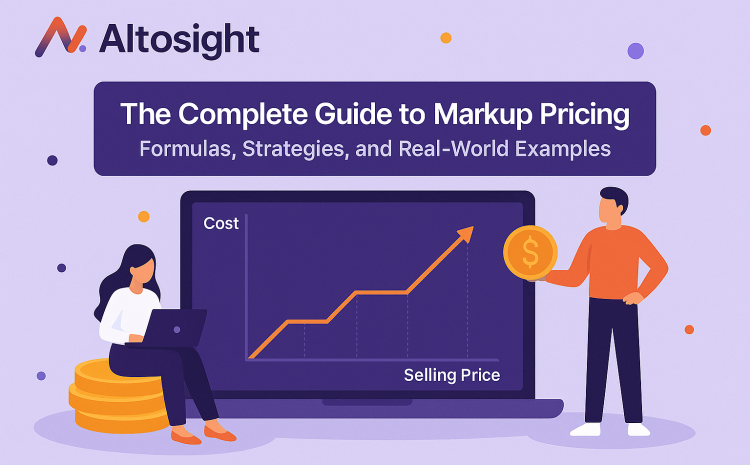
Retailers often struggle with how to price goods.
With increased competition, especially from ecommerce stores that have no storefront and can afford cheaper prices, can brick-and-mortar retailers remain competitive?
Definitely.
Customers still value the shopping experience and are ready to pay a higher premium.
But getting pricing right is key.
And there’s a lot of noise when it comes to pricing strategies.
Which is the most effective?
Generally, keystone pricing is the gold standard. It’s based on a simple formula that anyone can apply and avoid selling at a loss.
In this article, we’ll look at what is keystoning, how businesses can calculate a keystone price, who should use it, and how this strategy fares against others.
Let’s begin!
What exactly is keystone pricing?
Before algorithms could recommend sale prices in seconds, our ancestors relied on brainpower.
And to save time and headaches, in the late 19th century, the jewelry industry introduced the keystone pricing formula.
It allowed retailers to set a price that maximized profit margins, moved inventory, and kept customers happy.
Note: In Europe (EU) or countries where value-added tax (VAT) is a factor, businesses have two options.
They can add this expense to the retail price, or absorb the cost.
But remember, keystoning is meant to make pricing as simple as possible.
It’s generally a good idea to absorb this cost, as keystone prices already factor in fixed and variable costs.
But of course, a business is free to choose and can set a retail price that doubles the wholesale price, and then adds VAT.
Before we look at how to use keystone pricing, we first must understand a few important concepts.
What is retail price vs wholesale price?
Let’s use an example to understand.
Say a retailer pays $50 to acquire a blanket from a manufacturer (the wholesale price). In this case, the keystone price or retail price should be $100.
Pretty simple, right?
But then the question arises, is it an accurate approach?
Short answer, no. But it does have its benefits.
The keystone pricing formula provides businesses with a stress-free way to set prices.
And the downsides?
The keystone cost does not factor in competitor pricing. In many industries, the keystone price may be higher than the average market price and thus non-competitive.
If a business does not fix this quickly, its bottom line might tank.
Markup and margins 一 how to determine your Keystone Price
To better understand this strategy, let’s first understand what markup and margin are.
Markup, referred to in percentage, is the amount a retailer adds to the wholesale price of a product.
Keystone markup means a final retail price that includes the wholesale cost, and a 50% markup.
The formula is keystone price = wholesale price / (100 – markup %) * 100.
For example, let’s pretend you pay $1 for a toothbrush, plus 50 cents for packaging and shipping. This means your wholesale cost is $1.50.
Following the formula, a 50% markup would translate as $1.50/(100-50)*100 for a keystone price of $3.
On the other hand, keystone margin also referred to in percentage, is the difference between how much you sell an item for versus its cost.
The formula is margin = (retail price – wholesale price) / (retail price) * 100.
Coming back to our toothbrush example, using this formula gives us a margin of 50%.
Think of it like this. Keystone markup helps you set a retail price, while margin tells you how much profit you actually make per sale.
Who should use the keystone markup method?
Keystone pricing was created for brick-and-mortar institutions.
Thus, department stores, malls, and small businesses benefit most from this strategy, but anyone can use it, including eCommerce stores.
But remember keystone is not an exact science.
There are scenarios in which it can be detrimental to any business if it is not aware of the risks.
For example, a retailer using keystone pricing for high-ticket items such as a car, or expensive jewelry may scare away price-sensitive customers.
Meanwhile, eCommerce stores that blindly adopt keystoning risk pricing themselves out of a market known for lower prices.
In both scenarios, margins are at risk.
Thus, a business should first understand its industry.
Some industries such as groceries operate with pricing where their keystone margin is less than 50%.
Yet, in other industries, such as pharmaceuticals and luxury goods, the keystone markup can reach a pretty high percentage.
Generally, the keystone pricing formula works best for scarce or high-demand products and of course for brick-and-mortar stores.
Thus, having a price-testing framework is a powerful asset.
It allows you to respond to market feedback and adjust keystone prices given market response.
When not to use keystone pricing
Keystone pricing is effective when introducing new products into the market or when selling in an area where there is little competition.
If these scenarios apply to you, it means Keystone Pricing is not working:
- Low turnover of inventory
- Lots of local or online competition
- People only buy when you offer discounts
Generally, aging inventory or if purchases take place mostly during sales indicate a pricing mismatch.
It’s a sign of a market and customers unwilling to pay keystone prices.
Similarly, the presence of many local retailers or eCommerce stores is another clue of keystoning not being an effective pricing strategy.
In competitive environments, it’s common practice to cut prices to gain market share.
On the flip hand, if sales volume remains healthy after keystoning, a business can further markup prices to increase margins.
How Keystone Pricing fares against other pricing strategies
Keystone is an appealing pricing strategy.
But is it the best?
It depends on who you ask, but in most cases, it works well for the average business.
Let’s compare it to a few other common pricing strategies out there:
- Value-Based Pricing vs Keystone Pricing
As the name implies, in value-based pricing, businesses set retail prices price based on the perceived value of a product.
In other words, the wholesale price does not influence the retail price calculation.
This strategy works well in the luxury market where customers are willing to pay any markup as long as they value the item or brand.
Businesses selling common household items can give this strategy a skip.
- Cost-Plus Pricing vs Keystone Pricing
The Cost-Plus strategy is similar to Keystone markup in theory, but with a few extra steps.
In this method, the retailer manually calculates the fixed and variable costs to add to the wholesale price before factoring in markup.
Although this method guarantees a small profit margin, it offers little advantage over Keystone pricing which can be adjusted.
- Prestige Pricing vs Keystone Pricing
As the name implies, Prestige Pricing focuses on brand and/or product quality.
This strategy is similar to Value-Based Pricing in that it is not linked to the wholesale cost but the value of the item or brand.
This strategy is best fit for businesses selling items where the retail price has little influence on purchase decisions.
Over to you
As we’ve seen, keystone pricing is a powerful tool if used in the right scenarios.
But it’s not for everyone and cannot be applied in every situation.
Nonetheless, it does provide a good starting point. To succeed with this strategy, businesses must be able to recognize how the market responds to its prices and adjust accordingly.





